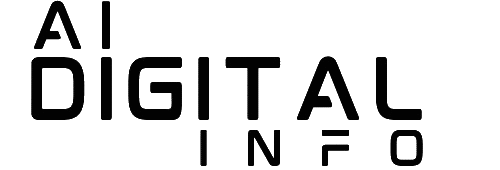The Future of Automation Is No Longer Binary—It’s Becoming Boldly Agentic.
What’s Fueling the Rise of Generative and Agentic Intelligence?
In the ever-evolving landscape of modern tech, two forces are rapidly redefining the boundaries of digital intelligence: Generative AI and Agentic AI. These technologies are no longer futuristic buzzwords—they are foundational to how businesses, governments, educators, and consumers interact with machines.
While Generative AI creates, composes, and imitates human-like content, Agentic AI goes further. It doesn’t just respond. It acts. It takes initiative, makes decisions, sets goals, and drives itself toward outcomes.
This article breaks down these two revolutionary technologies, how they differ, why they matter, and what industries are already being transformed.
Generative AI: The Creator Behind the Curtain
Definition and Capabilities
Generative AI refers to systems that produce content such as text, images, video, audio, and code based on the data they are trained on. These systems use deep learning models—particularly transformers—to understand patterns and generate new material that mimics human creativity.
Examples of Generative AI in Action
- Content Creation Tools: Tools like Jasper, Copy.ai, and ChatGPT generate long-form content, product descriptions, and email copy.
- Image & Art Platforms: MidJourney and DALL·E transform prompts into hyper-realistic visual art.
- Code Assistants: GitHub Copilot autocompletes entire functions based on context.
- Audio Production: Aiva and Soundraw create royalty-free background scores in seconds.
Strengths of Generative AI
- Creativity at Scale: Create endless variations of content.
- Speed and Efficiency: Output thousands of assets with minimal human input.
- Cost Reduction: Replace expensive design, writing, or voiceover processes.
Limitations
- Lacks Initiative: Cannot make decisions independently.
- Bias in Outputs: Reflects flaws and gaps in training data.
- Contextual Failures: May misinterpret intent without human correction.
Agentic AI: The Self-Driven Digital Force
Definition and Distinction
Unlike generative models, Agentic AI doesn’t wait for user input to produce something. It acts autonomously, with goals, strategies, and self-updating plans. Think of it as an AI with a mission—capable of assessing its environment, recalibrating, and executing tasks without being micromanaged.
Examples of Agentic AI Use Cases
- Customer Service Agents: AI bots that handle tickets across platforms, escalate critical cases, and improve workflows.
- Personal Digital Assistants: Calendar managers that not only remind but also reschedule meetings.
- Cybersecurity Systems: Agents that detect, isolate, and respond to threats without human oversight.
- Autonomous Research Tools: Software that reads scientific papers, identifies gaps, and conducts literature reviews.
How Agentic AI Works
- Goal-Oriented Frameworks: The system is assigned or assigns a goal.
- Perception & Planning: It gathers data, plans actions, and makes predictions.
- Action Loop: Executes decisions, learns from outcomes, and iterates.
Why Agentic AI Is a Game Changer
- Truly Autonomous: Doesn’t need constant prompts.
- Smarter Workflow Management: Delegates sub-tasks, optimizes time.
- Continual Learning: Adjusts behavior over time without retraining.
Key Differences: Generative vs. Agentic Intelligence
| Feature | Generative AI | Agentic AI |
|---|---|---|
| Primary Role | Content generation | Autonomous task execution |
| Initiative | Reactive | Proactive |
| Interaction | Input-driven | Goal-driven |
| Intelligence Type | Mimetic (Imitates data) | Strategic (Plans & acts) |
| Common Examples | Text/image creators | Virtual assistants, process bots |
| Long-term Use | One-off results | Continuous learning and decisioning |
Industries Already Embracing the Shift
1. Healthcare
- Generative AI helps draft medical summaries and reports.
- Agentic AI schedules patient follow-ups, automates billing, and monitors vitals.
2. Finance
- Generative AI writes financial blogs, client emails, and reports.
- Agentic AI rebalances portfolios, flags suspicious transactions, and updates compliance models.
3. Education
- Generative AI creates learning modules and quizzes.
- Agentic AI tracks student progress and dynamically assigns remediation plans.
4. Manufacturing
- Generative AI designs prototypes.
- Agentic AI manages supply chains, predicts failures, and adjusts production schedules.
Which One Is More Powerful?
There’s no clear winner—because they’re not meant to compete. Instead, the most impactful AI solutions will combine generative intelligence with agentic execution. Imagine an AI that writes its own goals, creates the tools to reach them, and adjusts its methods until success is achieved.
Future of Agentic AI: Toward Machine Autonomy

With the rise of AutoGPTs, Open Agents, and LLM-integrated workflows, the march toward machine-led autonomy is accelerating.
This raises critical questions:
- Who is responsible for autonomous decisions?
- How can we prevent agentic systems from acting against human values?
- Can agentic AI replace middle management?
Challenges and Ethical Considerations
- Transparency: Understanding agent decision-making.
- Security: Autonomous agents can be exploited.
- Control: Balancing freedom and supervision.
How Businesses Can Prepare for Agentic Intelligence
- Invest in AI Governance
- Train Teams on Agentic Frameworks
- Prioritize Interoperability Between Tools
- Set Ethical Boundaries and Fail-Safes
Conclusion: Collaboration, Not Competition
The question is no longer “Generative or Agentic?” but “How do we design hybrid systems that think, act, and adapt?”
We are entering a new era where machines don’t just support our work—they lead parts of it.

